Estate Ownership
James Baird
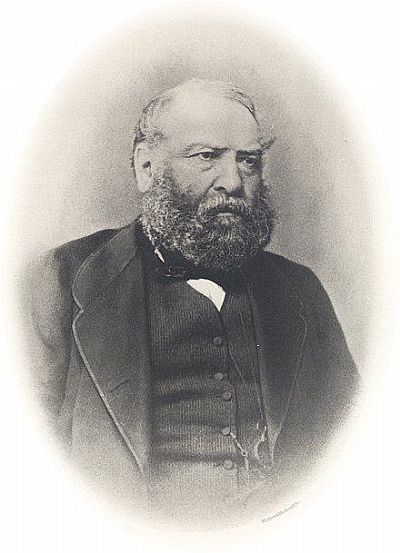
James Baird - (Source [1], PD-US, httpsen.wikipedia.orgwindex.phpcurid=4520224)
James Baird bought Knoydart Estate in 1857 for £90.000, following the period of trust supervision.
A number of houses were built during his ownership, of the same design as those built for his foundry workers in Lanarkshire. From hearsay, passed down through generations, it seems that he was considered ‘good for the estate’, and in addition to the houses he appears to have invested money to make other improvements.
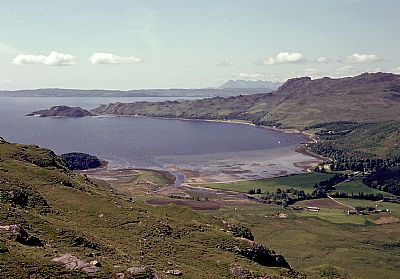
Inverie Bay
He was the fourth of the eight sons and two daughters of Alexander Baird and Jean Moffat, from Monklands in Lanarkshire. The family moved from farming to coal mining and iron smelting, with the first Gartsherrie furnace opening on 4 May 1830 – becoming famously known as the Bairds of Gartsherrie. James Baird was also MP (Conservative) for the Falkirk Burghs during 1850-57 having contested the seat in opposition to Mr Loch, factor to the Duke of Sutherland.
James Baird said the success, which he and his brothers achieved, was in a great measure, owing to his mother’s precepts and good example. The children were all instructed in farm labour, and all of them, as they grew up, had a task assigned to them commensurate with their strength; but nothing, however pressing, was allowed to interrupt their lessons.
The Bairds developed the first chain-driven coal cutting machine, nicknamed the Gartsherrie, which became the prototype for mechanical coal cutters for more than a century. Later James made a move into textiles and supplied the early Marks and Spencer stores.
He also founded the Baird Lectures and the Baird Trust to administer the substantial amount (£500,000) bestowed by him for the benefit of the Church of Scotland.
John Baird
On the death of James in 1876, his thirty-one-year-old nephew John Baird took over Knoydart Estate. It is reported that the estate at the time was largely given over to sheep, initially introduced by the 1850s Trust, and that there were five large sheep farms. Scotos (Scottas) west of Inverie, was probably the first farm.
At a time when the profitability of sheep was falling and John was having difficulty renting out four of those farms having taken over the stock himself. By September 1890 John Baird sold off 9000 Blackface and Cheviot sheep at Inverness Auction Market. Clearly the 'profitability of sheep was falling' by 1890 and the estate was mainly turned over to stalking.
While addressing the Napier Commission in 1883 (a Royal Commission and Public Inquiry into the condition of Crofters and Cottars in the Highlands and Islands) he provided a glimpse of how the estate was managed by telling the Commission, “There was no return for the capital invested in the stock during the period 1876 to 1881. Until then the farms had been rented to non-resident farmers from the south”.
John Baird wanted to divide the farms and rent them to resident tenants, but he had no offers that were acceptable. He was asked if any of the Crofters living along the coastal area in the west were interested, but he said they were not. There were 11 Crofters, a total of 50 people including families working 500 acres.
He continued, “I was prepared to divide them to suit any reasonable offer. I was prepared to build houses and do what was necessary to enable the tenant to make a start.” He conceded that the inaccessibility of the property will have made it more difficult to let the large farms that he now wanted to divide.
Asked what he intended; he told the Commission that he would put the higher land under deer forest which was not profitable for running sheep. If the divided farms could be tenanted locally there would be work for the Crofters in addition to running their crofts, then crofting might possibly expand. With a deer forest there would also be work but mainly for the younger men who could be employed as ghillies. He did want to retain sheep on the middle ground, “Where I can keep them properly.”
Some of the Crofters fished he told the Commission, “But they do not prosecute it with any vigour. There is about £180,000 worth of herring taken out of Loch Hourn, mainly by large numbers of east coast boats. I asked why they do not take part in the fishing they explained that their only difficulty was the want of nets. So, I offered to furnish them with nets for each of their boats, which could be repaid over three years.
They appeared to be happy with this arrangement but by the following year I found that only one man had purchased £5 worth of nets from a neighbour but otherwise the offer had not been taken advantage of at all. I don’t think they can be called keen fishermen but they got a certain amount of employment about the fishers without having nets themselves.”
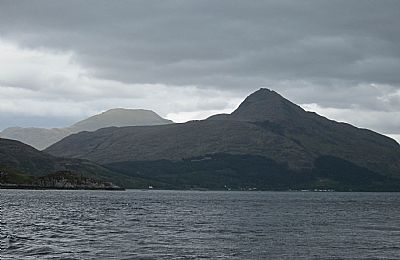
Loch Nevis and Inverie
When asked about his knowledge of the evictions during the time the Glengarry Trustees managed the estate he replied, “I believe there were some very barbarous evictions at that time and resistance on the part of the people.” Asked if he had contemplated putting the lower ground under deer if it yielded a higher rent, he replied, “I certainly should not do it. My desire is to have a resident population there, and I am prepared to do that at some expense. It is not my desire to raise the value of the property by what I consider an injury to it.”
The Royal Commission and Public Inquiry into the condition of Crofters and Cottars in the Highlands and Islands was in the main established as a result of the serious disturbances of the late 1870s and early 1880s - many parts of the highlands had become ungovernable, as crofters protested against the power of the landlords. The Commission Report led to the Crofters Act of 1886 which effectively ended the Clearances - but not all of the problems facing residents in the West Highlands.
It was recorded in 1883 that John Baird of Lochwood held 67,000 Knoydart acres, with a valued income of £4033 per annum. The area of arable, land under the plough was estimated to be less than 1000 acres. Crofting rents rose by 5 shillings over the previous 30 years. Population in 1871 was 470 but that had dropped to 437 by 1881.
1883 John Baird of Knoydart was a promoter of the Loch Eil & Mallaig Railway. The West Highland Railway (Mallaig Extension) was finally secured in 1894.
"In 1878 John Baird married Constance Emilia Harford, daughter of Mr J. B. Harford of Blaise Castle, Gloucestershire. After his marriage Mr Baird lived at Knoydart and devoted himself to agricultural pursuits. He was a sheep farmer and was popular among his tenantry, being looked upon as a model landlord."
Highland News - Obituary July 1900
"The Bairds were remembered with respect, and to this day the houses they built for their workers can be identified by the letters JB and the date they were built."
Archie MacDougall (last of the 1940s land raiders)
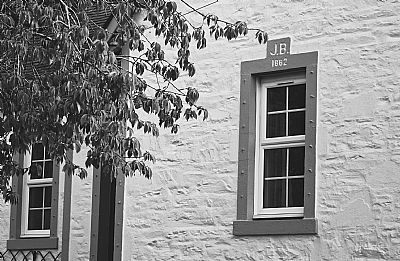
A John Baird House - date above window 1882
Edward Bowlby
Edward Salvin Bowlby bought Knoydart Estate at public auction from John Baird in 1893 for the reduced upset price of £100,000. Born in June 1830 he was educated at Winchester College and graduated from St. John's College, Cambridge with an MA and was admitted to Inner Temple to practice as a Barrister.
He married his first wife, Maria Rimington in 1861 before marrying Elizabeth Vans Agnew in June 1880. He went on to hold the office of High Sheriff of Hertfordshire in 1895 while living at Gilston Park, Hertfordshire and died on 4 November 1902 at age 72. After his death Knoydart remained with the family, managed by Arthur Salvin Bowlby, during the following thirty years, when it was sold to Lord Brocket in 1933.
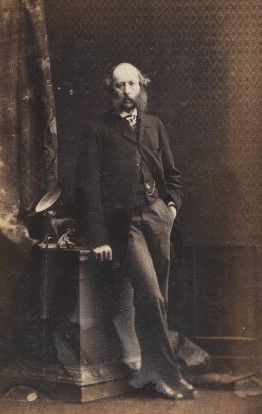
Edward Salvin Bowlby
by Camille Silvy - © National Portrait Gallery, London
The estate then was primarily two deer forests, one at Inverie and the other at Barrisdale. Sheep farming took up the remaining 21,000 or so acres. Along with salmon and trout fishing the estates annual income was around £4000.
Captain Bowlby born 1883, of the Horse Guards, the eldest son of Edward Salvin Bowlby and his second wife Elizabeth, was killed at Ypres in May 1915. A cross in memory of Edward stands near Knoydart’s south westerly point out past Sandaig.
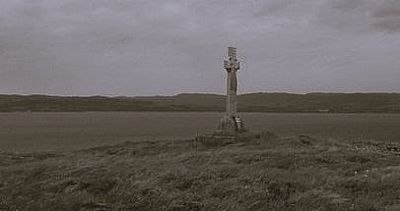
Bowlby Cross (Western Front Association)
It’s been said that the years of Bowlby ownership was a halcyon period for those living on Knoydart.
John McHardy was head gamekeeper and forester on Knoydart for a significant forty-two years, and during that time he served under four proprietors: with the late Mr James Baird for eleven years, with the late Mr John Baird (Mr James Baird's nephew) for seventeen years, for nine years with the late Mr Edward Salvin Bowlby and for five years with the present proprietor, Mr Arthur Salvin Bowlby.
John McHardy was laid to rest in the Knoydart burying ground on the 23rd of July 1907, when almost every man in the district attended to pay their last tribute of respect to their old friend.
Archie MacDougall (last of the 1940s land raiders) recalled as a youngster, "the happy community during the days of the Bowlby family's ownership. Mr Milne, the head gardener at Inverie House, had a staff of 10 in those days."
However, the fortunes of Knoydart took a darker turn in 1933 under the ownership of Lord Brocket.
Lord Brocket
Stalking was a long established estate activity by the time Alan Ronald Nall-Cairn, Lord Brocket and alleged Nazi sympathiser purchased Knoydart in 1933 with his inheritance on the death of his father. Born into a significant brewing family Nall-Cain was educated at Eton and Oxford, becoming a barrister and was elected in 1931 a Conservative Member of Parliament for Liverpool Wavertree.
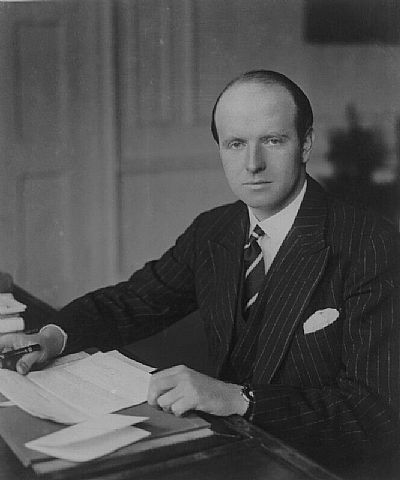
Arthur Ronald Nall Nall-Cain, 2nd Baron Brocket
by Elliott & Fry - © National Portrait Gallery, London
It had been hoped that he would continue to run the estate in a similar way to that of the Bowlby family but that hope faded as Lord Brocket appeared to distance himself from the residents. A 127 of long-serving members of staff, it is said, were paid off and gamekeepers were told to discourage tourists.
During 1939 Lord Brocket attended Hitler’s fiftieth birthday party in Germany demonstrating a certain enthusiasm for the Reich. The Foreign Secretary the Earl of Halifax, along with many other senior Conservatives, was keen to come to some sort of agreement with Germany and used Lord Brocket as a conduit to convey to the leading Nazis the views of the British government.
Lord Brocket saw little of his estate during the war and some reports say he only avoided imprisonment relating to his Nazi sympathies, because of illness and that he was helpful when Knoydart was needed by Government.
'The Scotsman in 1948 indicates that Lord Brocket was co-operating with the government prior to Requisition through his Factor Mr D Mackenzie, with regard to increasing the sheep stock onto the deer forest.
The Factor told the Ministry that Lord Brocket was willing to gradually build up an acclimatised stock while telling them that imported stock which had not been acclimatised would have difficulty surviving the winter.
The Ministry wanted much quicker results so the deer forest was requisitioned and stocked with 1200 cast Cheviot and Blackface ewes and 1000 Blackface wether lambs. During the 1940-41 winter, 1200 of the newly introduced sheep died.
The Ministry quickly returned the management of the deer forest to Mr Mackenzie the Factor; at the war's end Knoydart was supporting over 5000 additional sheep.'
Late 1940s
After the war an electric light scheme provided all the houses and cottages within reach of the new power-house at Inverie village.
It's thought that this development used discarded generators left by the military.
During the 1950s, under the ownership of the Crosthwaite-Eyre family, and management of Factor James May, the electrical system was improved to also provide power for cooking and heating.
Around the same time a new reinforced concrete pier was built at Inverie.
Oliver Crosthwaite-Eyre
The Crosthwaite-Eyre family bought the estate from Lord Brocket of ‘Brocket Estates Limited’, on 19th May 1954 for the sum of £37,500; excepting the site of the Brocket family memorial, below Torr a Bhalbhain. Brendan Bracken, a Crosthwaite-Eyre family trustee, felt the purchase of Knoydart Estate to be a poor financial decision, however the family ran the estate successfully for twenty years.
There was a marked war time contrast between Lord Brockett and the Crosthwaite-Eyre family.
During World War II, Oliver Crosthwaite-Eyre served in the Royal Artillery and Royal Marines in Norway, North Africa, Sicily, Italy, Normandy and Germany. He was on the planning staff for the invasion of Italy. By 1945 he was a 31-year-old Colonel in the Marines.
John Crosthwaite-Eyre, the younger brother of Oliver and was an Intelligence Corps Lieutenant. In January 1943 he was captured during Operation Felice while with SOE, a mission to destroy viaduct in Tunisia. Then as a prisoner of war, in Fontamello Camp Italy, he escaped at the time of the Italian Armistice and headed for Switzerland, but was recaptured at the border.
John’s subsequent German POW camp was liberated by brother Oliver and part of his Royal Marine battalion.
During WW2 the SOE, Special Operations Executive, trained in Lochaber and in Knoydart 'Commando Coutry' by Stuart Allan
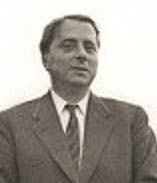
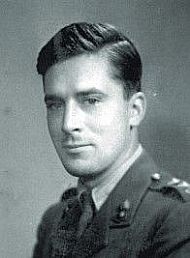
Oliver John
British Newspaper Archive Monte San Martino Trust – June 2018
Colonel Sir Oliver Crosthwaite-Eyre was born on the 14th October 1913 into the publishing family Eyre & Spottiswood. It is said the family has had links with publishing since the days of Charles II. Oliver Crosthwaite-Eyre was a British Conservative Party politician. At the 1945 general election was elected as Member of Parliament for the New Forest and Christchurch constituency, and held the seat until his resignation from the House of Commons, because of ill health in 1968.
He died on the 3rd February 1978 and is buried at Kilchoan along with his wife. John Crosthwaite-Eyre, who died in 1968, is buried beside Oliver along with John's wife.
It’s thought that John managed the estate for Oliver, but this is uncertain.
During the 1950s Inverie made the headlines when a village generator was housed west of the pier, giving electricity to local houses for the first time, ‘Housewives are Thrilled’ read the headline. During almost 20 years of ownership the Crosthwaite-Eyre family made other improvements and appear to have gained approval of the locals.
In his book ‘West Highlands’, Tom Weir describes a chat with a Knoydart resident, probably during the time that the Crosthwaite-Eyre family owned the estate. He was told that they had many happy times on the estate; though everything had to be done by the book when the laird arrived, especially during the stalking season each year.
Standing high on the point at Rhubha Raonvill and looking out to sea is the Madonna, thought to have been commissioned by Lady Crosthwaite-Eyre. Its arrival at Mallaig on a large lorry caused excitement and some locals dubbed it Plastic Mary.
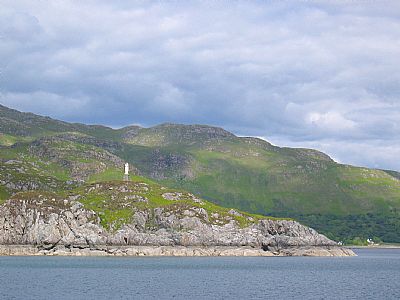
Madonna
Over the years improvement grants were paid by the County of Inverness. One grant for the sum of £282 in July 1957 was in respect of the Head Boatman’s house. It was the south most house of a row in Inverie on the east side of the road.
During the ownership of the Crosthwaite-Eyre family, Camusrory was used as an Adventure Training Centre by Dr Barnardos Homes and later The Travellers Trust, continuing through into the 1970s.
Lord Hesketh
The Crosthwaite-Eyre family sold the estate in 1973 to Lord Hesketh aged 22, of motor racing fame. This was the year the Hesketh Team boarded their yacht and cruised into Monaco harbour for their first F1 race with their main driver James Hunt.
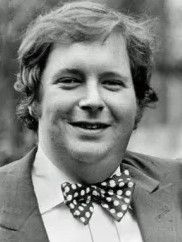 Lord Hesketh (thejudge13.com)
Lord Hesketh (thejudge13.com)
It's unlikely the new owner was able to spend much time on his estate before he sold it.
Major Nigel Chamberlayne-Macdonald
Major Nigel Chamberlayne-Macdonald took possession of Knoydart for the sum of £1,500,000, under the name of Cranbury Home Farms Limited, in 1973 from Lord Hesketh.
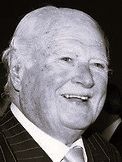 Nigel Chamberlayne-Macdonald (geni.com)
Nigel Chamberlayne-Macdonald (geni.com)
Nigel Chamberlayne-Macdonald is the youngest of four children with family connections to Slate, in the Isle of Skye. He gained the rank of Major in the Scots Guards and in April 1958 married Penelope Chamberlayne, whose family can be traced back to around 1066. He held the office of Gentleman Usher to HM Queen Elizabeth II from 1979. During 1981 he was invested as an Officer, Order of the British Empire.
"Seventeen-year-old Sir Ian Macdonald of Sleat (Skye) made the 1964 annual gathering of the Clan Donald Society of Edinburgh a notable occasion. The young Chief was introduced to members of the Society,accompanied by his uncle, Major Nigel Chamberlayne-Macdonald, the 'Tutor of Sleat."
Clan Donald Society - 'Tutor of Sleat' was the under age Chief's guardian
Major Macdonald made a valiant attempt to restore the Estate's fortunes by building a fish farm and numerous other expensive improvements. Constructing the hydroelectric system fed by Loch Bhraomisaig on the slopes of Ben Buidhe was an unbelievably complex and costly build. Also, during the 1970s television made an appearance, with an antenna high on the hill above Inverie and the Major created the Old Forge for estate workers and run by them, with prices that were similar to those in Mallaig.
Also, during the early days of Major MacDonald's ownership, the estate continued letting Camusrory for adventure activities and later to Outward Bound Loch Eil to run course, which included hill walking over Knoydart and surrounding estates. Support and permission was given to St Andrew’s University Mountaineering Club when they asked to build a memorial bridge over the River Carnach at Camusrory. Scout Groups were encouraged to set up annual camps; all indicating that visitors were welcome; though not all visitors were happy.
A Visitor's Comment
"A privileged entry into a remarkable area that was like a fiefdom. There was a 'club' for the villagers, I didn't venture in."
Comment made by an early 1980s Knoydart visitor
"A privileged entry into a remarkable area that was like a fiefdom", is probably not the way things were. A remarkable area certainly, but if the writer had decided to go into, ‘the club for locals’, he would have discovered that many had already been made welcome at the Old Forge.
“Knoydart Estate does not discourage visitors, and with permission of the owner a working party of the Mountain Bothies Association voluntarily renovated Sourlies Bothy.”
John Hinde 1977 - ex RAF Mountain Rescue Team Leader
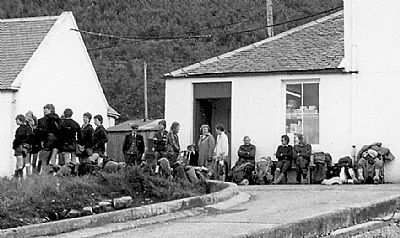
A busy morning at the pier waiting for the boat - 1981
Professor Tom Devine wrote of the myths of West Highland life, which were created by writers aiming to match the expectations of their readers.
Those myths are continually repeated and fresh ones created.

